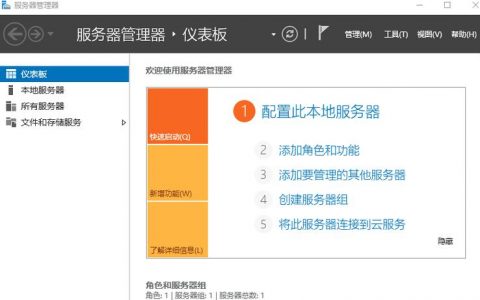
背景
在现代分布式系统中,负载均衡是确保系统高可用性和扩展性的关键技术之一,加权轮询(Weighted Round Robin)算法是一种常见的负载均衡策略,它根据服务器的处理能力分配请求,使得性能较好的服务器能够处理更多的请求,本文将详细介绍加权轮询算法的原理、实现及其应用。
负载均衡分类
基于硬件的负载均衡:如F5等设备,通常具有强大的性能和功能,适合处理大规模流量和应用需求。
基于软件的负载均衡:如Nginx、HAProxy等,通过安装在普通服务器上实现负载均衡,适用于中小规模的应用。
DNS负载均衡:通过DNS服务器解析域名返回不同的IP地址,实现简单的负载均衡,LVS(Linux Virtual Server)也属于此类,通过NAT、DR、TUN等方式实现。
加权轮询算法
原始加权轮询算法

原始加权轮询算法的基本思想是遍历所有节点,寻找权重最大的节点进行请求分发,选中节点后,将其权重减1,当权重减至0时,重置为初始权重,这种方法可能导致权重大的节点连续接收多个请求,造成负载不均。
示例
假设有三个节点A、B、C,权重分别为4、2、1:
前两个请求会打在机器A上,导致A的压力过大,而B和C可能处于空闲状态。
优化后的加权轮询算法
优化后的加权轮询算法解决了上述问题,使得请求分配更加平滑,具体步骤如下:
1、计算总权重:首先计算所有节点的权重总和。
2、选择节点:每次请求到来时,计算每个节点的当前权重(currentWeight = currentWeight + weight),并选择当前权重最大的节点。

3、更新权重:选中的节点其当前权重减去总权重。
示例
假设有三个节点{a, b, c},权重分别为{4, 2, 1},共7次请求:
初始currentWeight值为{0, 0, 0}。
每次请求后,重新计算currentWeight并选择最大值的节点。
| 请求序号 | 请求前currentWeight值 | 选中节点 | 请求后currentWeight值 |
| 1 | {0, 0, 0} | a | {3, 0, -1} |
| 2 | {3, 0, -1} | b | {3, -1, -2} |
| 3 | {3, -1, -2} | a | {2, -1, -2} |
| 4 | {2, -1, -2} | c | {2, -1, -1} |
| 5 | {2, -1, -1} | a | {1, -1, -1} |
| 6 | {1, -1, -1} | b | {1, 0, -1} |
| 7 | {1, 0, -1} | a | {0, 0, -1} |
从表中可以看出,七次调用选中的节点顺序为{a, b, a, c, a, b, a},a节点选中4次,b节点选中2次,c节点选中1次,实现了较为均匀的负载分配。
代码实现
以下是Java版本的加权轮询算法实现:
import java.util.*;
public class Node implements Comparable<Node> {
private String ip;
private int weight;
private int currentWeight;
public Node(String ip, int weight) {
this.ip = ip;
this.weight = weight;
this.currentWeight = 0;
}
@Override
public int compareTo(Node node) {
return this.getCurrentWeight() node.getCurrentWeight();
}
public String getIp() {
return ip;
}
public int getWeight() {
return weight;
}
public int getCurrentWeight() {
return currentWeight;
}
public void setCurrentWeight(int currentWeight) {
this.currentWeight = currentWeight;
}
}
public class WeightedRoundRobin {
private static List<Node> serverList;
WeightedRoundRobin(List<Node> serverList) {
WeightedRoundRobin.serverList = serverList;
}
private String select() {
if (CollectionUtils.isEmpty(serverList)) {
throw new RuntimeException("service node is empty");
}
int totalWeight = 0;
for (Node node : serverList) {
totalWeight += node.getWeight();
node.setCurrentWeight(node.getCurrentWeight() + node.getWeight());
}
System.out.println(Arrays.toString(serverList.toArray()));
Node currentWeightMaxNode = Collections.max(serverList);
currentWeightMaxNode.setCurrentWeight(currentWeightMaxNode.getCurrentWeight() totalWeight);
return currentWeightMaxNode.getIp();
}
public static void main(String[] args) {
HashMap<String, Integer> map = new HashMap<>();
Node node1 = new Node("192.168.0.1", 4);
Node node2 = new Node("192.168.0.2", 2);
Node node3 = new Node("192.168.0.3", 1);
List<Node> serverList = Arrays.asList(node1, node2, node3);
WeightedRoundRobin weightedRoundRobin = new WeightedRoundRobin(serverList);
for (int i = 0; i < 100; i++) {
String select = weightedRoundRobin.select();
map.put(select, map.getOrDefault(select, 0) + 1);
}
System.out.println(map);
}
} Dubbo中的加权轮询算法
Dubbo框架中使用了Nginx的平滑加权轮询算法来实现负载均衡,Dubbo允许用户在配置文件中指定服务端方法的负载均衡策略,
<dubbo:service interface="...">
<dubbo:method name="..." loadbalance="roundrobin"/>
</dubbo:service> 这种配置方式使得用户可以灵活地选择负载均衡策略,以适应不同的业务场景。
加权轮询算法通过引入权重的概念,使得服务器可以根据自身的处理能力接收相应数量的请求,从而实现更合理的资源利用,优化后的加权轮询算法进一步解决了原始算法中负载不均的问题,使得请求分配更加平滑,无论是在硬件还是软件层面,加权轮询算法都得到了广泛应用,成为负载均衡领域的重要算法之一。
各位小伙伴们,我刚刚为大家分享了有关“负载均衡加权轮询文档介绍内容”的知识,希望对你们有所帮助。如果您还有其他相关问题需要解决,欢迎随时提出哦!
【版权声明】:本站所有内容均来自网络,若无意侵犯到您的权利,请及时与我们联系将尽快删除相关内容!






发表回复